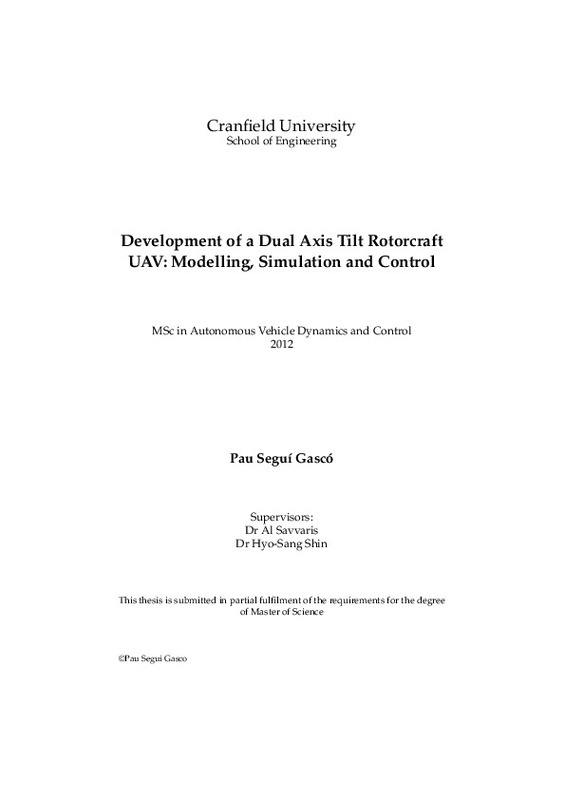JavaScript is disabled for your browser. Some features of this site may not work without it.
Buscar en RiuNet
Listar
Mi cuenta
Estadísticas
Ayuda RiuNet
Admin. UPV
Development of a Dual Axis Tilt Rotorcraft UAV: Modelling, Simulation and Control
Mostrar el registro completo del ítem
Seguí Gascó, P. (2012). Development of a Dual Axis Tilt Rotorcraft UAV: Modelling, Simulation and Control. Universitat Politècnica de València. http://hdl.handle.net/10251/38205
Por favor, use este identificador para citar o enlazar este ítem: http://hdl.handle.net/10251/38205
Ficheros en el ítem
Metadatos del ítem
| Título: | Development of a Dual Axis Tilt Rotorcraft UAV: Modelling, Simulation and Control | |||
| Autor: | ||||
| Director(es): | Al Savvaris Hyo-Sang Shin | |||
| Entidad UPV: |
|
|||
| Fecha acto/lectura: |
|
|||
| Resumen: |
This thesis stems from a project to design a novel dual axis tilt quadrotor that
uses gyroscopic effects to explore an increase in the performance with respect
to a conventionally actuated quadrotor. The project is ...[+]
|
|||
| Palabras clave: |
|
|||
| Derechos de uso: | Reserva de todos los derechos | |||
| Editorial: |
|
|||
| Titulación: |
|
|||
| Tipo: |
|
recommendations
Este ítem aparece en la(s) siguiente(s) colección(ones)
-
ETSID - Trabajos académicos [8898]
Escuela Técnica Superior de Ingeniería del Diseño







